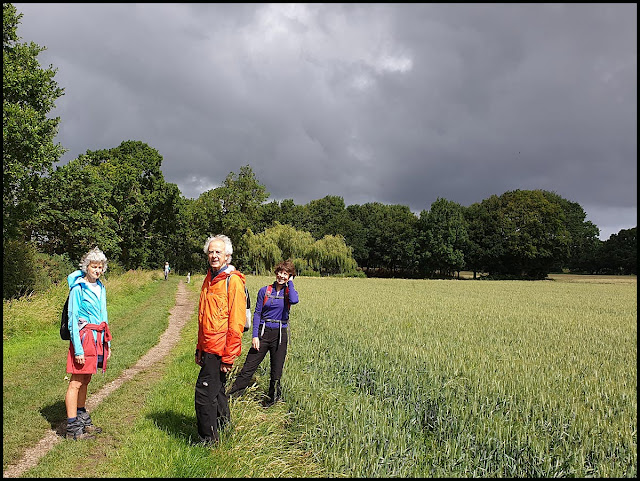There's only one picture with this posting, the reason for which may soon become evident, but if Dave or Nick have any, I'm happy to add them.
1988 has until now been absent from these pages, but I'm remedying that with a few memories from all that time ago, starting with what was a traditional start to the year for me for a period of many years. A good walk.
Here's the verbatim diary entry, which surprisingly doesn't mention Dave's clothing, which has been superseded by a more spacious 'lunch shelter'.
After a late night with the Binns / Hills / Price / Perry
squad plus Alan and Christine, and lots of Balderdash / Bastard activities,
Martin crawled reluctantly from his pit at 7:45 and was out of the house by 8
am.
There was an unusually long delay at 296 Burton Road
Laurie was up!
This semi somnolent trio then sped (if travelling in
Martin's Sierra can be so described) up to Seathwaite for the 10:30 rendezvous
per his Christmas cards.
Only the Gray Nick was there. We arrived at 10:20 to be
greeted by him, and then we adopted a time-consuming donning of boots and
waterproofs whilst still in the car. (It was throwing it down outside.) Laurie
made a futile attempt to waterproof his boots.
Eventually we braved the elements and set off into the stair
rods. Boots soon leaked and Laurie's waterproof trousers proved inadequate. We
plodded up to Sty Head, overtaking another two parties, and then traversed the
cloud enshrouded Corridor Route
The col with Lingmell proved to be a draughty place, but a
walker sploshing his way down had told us it was now much calmer on top.
There were a number of soggy groups near the summit, where gloves
were for the first time needed. The stair rods had become horizontal, but it
was just possible to balance on top of the trig point.
Some photos were taken (see above), and lunch was quickly (very quickly
by Dave) noshed and coffee (except Dave) sloshed down.
Martin made his usual navigational error on leaving the
summit, but on production of a compass this was soon corrected, and the little
group sloshed off in the direction of Great End. The wind was now behind us,
which judging by the expressions of those travelling in the other direction,
was A Good Thing.
The slippery rocks were negotiated without injury, and Esk
Hause was soon approached. Here the cloud cleared a little and the way down to
the Sprinkling Tarn path was clear.
An interesting river crossing brought us beside Ruddy Gill,
for the final descent back to Seathwaite. This path had recently been repaired
to counter erosion damage, and the descent was quite hard work on the slippery
stones.
As the gloom decreased, the stair rods became vertical again (the
rain was relentless all day) and the white water on the hillsides assumed a
dominance over other features of the landscape. The view to Seathwaite and on to
Borrowdale was 'atmospheric'.
Nick commented usefully that Seathwaite has the highest annual
rainfall recorded in Britain
The convoy to a Little Chef near Windermere then commenced,
but Nick - the nattily dressed hiker in his dad's Rover, soon disappeared. A
futile wait / search ensued. This culminated in Martin flashing to distraction
a motor which turned out to be a Volvo.
Chef's grills and sundry pancakes later, and a drive in the rain
back to Manchester by 7:30 brought a close to the day's activities, except for
a phone call from Nick, who had disappeared due to failure to stow his boots
and waterproofs before departure from Seathwaite. (Meanwhile, in the Little
Chef, there had been reminiscences of Bob Laker's similar exploits with a brief case that he 'stowed' on the roof of his car!)
For the sake of completeness, here's the route we took - 14 km with 1000 metres ascent:




























































